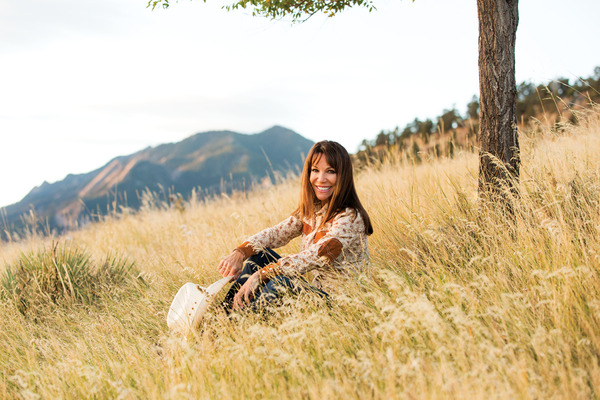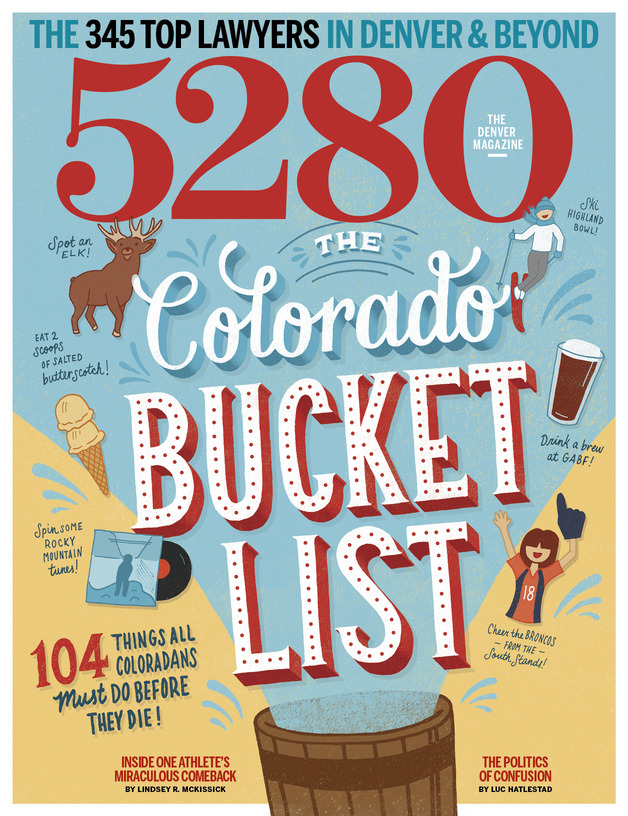The Local newsletter is your free, daily guide to life in Colorado. For locals, by locals.
 When the spurs hit the dirt, that’s Leah Garcia’s cue. As a sideline reporter for Professional Bull Riders association (PBR) telecasts, Garcia interviews cowboys immediately after their tries at eight-second rides. The Boulderite crisscrosses the nation attending bull-riding events more than 150 days each year, and on January 13, Garcia will post up at the National Western Stock Show to scout the country’s best bull riders and sign autographs. We caught up with the veteran reporter to talk bulls, belt buckles, and cowboy culture in Colorado.
When the spurs hit the dirt, that’s Leah Garcia’s cue. As a sideline reporter for Professional Bull Riders association (PBR) telecasts, Garcia interviews cowboys immediately after their tries at eight-second rides. The Boulderite crisscrosses the nation attending bull-riding events more than 150 days each year, and on January 13, Garcia will post up at the National Western Stock Show to scout the country’s best bull riders and sign autographs. We caught up with the veteran reporter to talk bulls, belt buckles, and cowboy culture in Colorado.
There aren’t any women riding in the professional circuit. What is your key to success covering a male-centric sport?
I grew up immersed in rodeo. I was raised roping and riding on a small ranch in northern California. I started competing in rodeos at a young age and did not stop until I graduated from Cal Poly San Luis Obispo, after competing on its rodeo team for four years in breakaway roping, barrel racing, and team roping. The riders and fans know I understand bull riding and love it.
How did you get your start with the PBR association?
My college degree is in communication. After a career as a professional mountain bike racer, I transitioned into broadcast reporting for extreme sports like free-skiing and mountain biking. In 2002, the network I was working for asked if I was interested in working a PBR event. My detailed knowledge of rodeo riding caught the producers’ attention, and they asked me to stay on for the season.
What is your ideal interview?
I position myself near the main exit gate to catch riders heading in and out. Sometimes they try to avoid me. I give them space if they are emotional or vulnerable, but 99 percent of the time they circle back for an interview. My favorite time is the “breathless interview” that occurs right after the rider has gotten off a bull and you can get his immediate, raw reaction.
Have you ever ridden a bull yourself?
I rode a bull once in high school in the practice pen. It was one of the most exhilarating and terrifying moments of my life. After five seconds on the back of the bull, I got bucked off, kicked pretty hard, and was sore for a week. That was enough for me.
The bulls don’t seem particularly pleased to have cowboys on their backs. How are the PBR bulls treated?
The bulls are rock stars. They are fed high-quality hay and high-protein grains daily, receive B-12 shots, and are treated like royalty. Some bulls are more ornery than others, but most are professionals that love what they are doing. If they don’t want to buck, they wash out of the program.
We all want to look a little Western at the Stock Show. Where should someone buy a good cowboy hat?
It’s not about where you buy your hat; it’s all about how it’s shaped. Go to someplace like Sheplers, where they know how to shape it when you buy it. Or wait and get one at the Stock Show. Some of the best hat shapers in the country descend upon Denver each January. Buy your hat then and you won’t be unhappy.
How would you rank the rodeo culture in Colorado compared to the rest of the country?
Colorado is cowboy. Thanks to the early branding in areas like Colorado Springs, Steamboat Springs, and other Front Range communities, we think of ranches, horses, and cowboys as a way of life. As for rodeo-specific, I think the fact that the ProRodeo Hall of Fame and the PBR corporate headquarters are in Colorado speaks volumes about the importance of the sport and its connection to the state.
5280.com Exclusive: Hear more from Leah Garcia below.
Explain the belt buckles cowboys wear at the rodeo.
The idea of a drugstore (show) comes with a big, buckled belt. But, in rodeo culture, the buckle is an equivalent to a trophy that you wear when you earn it. You can wear one handed down from family.
Do you have a favorite bull?
Bushwhacker is just an amazing bull to watch—he is smart and a great athlete. He learns rider’s weaknesses and exploits them; he just loves to buck them off. In the chute he is silent except for one ear that twitches, but the moment the gate opens he explodes out. Very few riders have figured him out. A couple of other great ones to watch are Asteroid and Bones.
Who’s your favorite rider?
I don’t have a single favorite. I enjoy watching each ride, but there are some that are charming and give great interviews. Chris Shivers and Justin McBride were good ones. And 2013 world champion J.B. Mauney is always interesting; he can be quite intense.
What do you think about the trend toward riders wearing helmets?
I think it is a logical next step in the evolution of the sport. Bull riding is brutal; most riders are lucky to make it to their 30s, and have a myriad of injuries. If helmets can save them from catching a horn to their temple or dissipate the impact of a kick in the head, then great.
What is your favorite stop on the PBR circuit?
Madison Square Garden in January is absolutely amazing. You realize that you are walking in the shadow of some of the greatest musicians, entertainers, and athletes in history. The stadium is filled to capacity with rabid New Yorkers loudly voicing their opinions about riders, bulls, and everything else.
What’s the toughest part of your job besides spending so much time on the road?
I have to be camera-ready 24/7. There is no downtime. When I am traveling I’m on Twitter and Facebook updating fans; at the arena I am meeting folks. I continually focus on being physically and mentally healthy. I don’t have the luxury of having a bad day or being sick.
What goes into preparing for a telecast?
Every day the entire TV crew has a production meeting to discuss what storyline we want to focus on for that day. My job is to help steer the commentary toward it. Then our color commentators work what I have gotten into their discussions. When it works perfectly, we are able to build several different storylines that all converge at the end of the day for a memorable event.
What are your future plans?
My contract was re-signed for the 2015 season. I plan to continue bringing stories, people, adventure, and products to life on camera.
5 Stock Show Tips from Leah Garcia
1. Professional bull riding is scored based on two things: the rider and the bull, with up to 50 points awarded for each. A bull that spins and kicks will earn more points than a bull that just jumps.
2. Bulls are paired with a rider by draw or draft. Draw means the pairing is random; draft means the cowboys can pick their bulls.
3. Riders concoct their own rope rosin—made from pine tree resin—to apply to their ropes. The sticky substance allows riders to maintain a better grip when the bulls start bucking.
4. Watch for 2009 world champion Kody Lostroh, a Longmont cowboy who always competes at the Stock Show. His classic style makes every ride a how-to tutorial.
5. The danger for a bull rider begins the second he climbs on the animal’s back in the chute. The chute is notorious for causing knee, head, and other injuries if the bull acts up.









